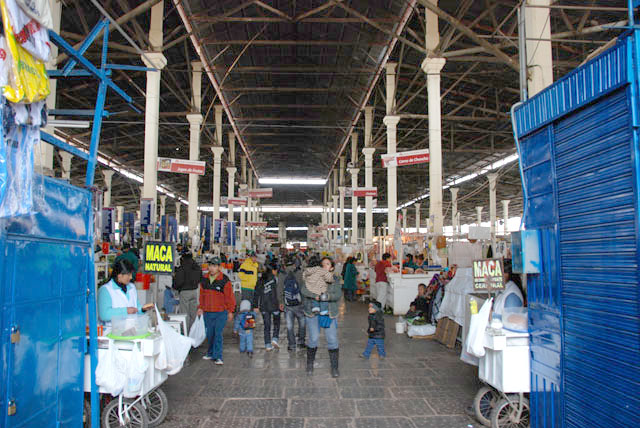
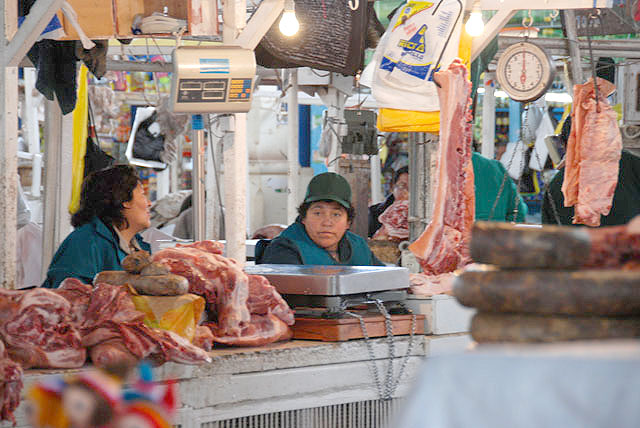
Along the Inca Road
March 30th - Cusco
San Pedro Market
We start the day by visiting the San Pedro Market near the downtown plaza. The sights, sounds and aromas told you this was not a sterile supermarket. All kinds of fruits, spices, meats, fish, bakery items and more where on display for tasting and purchasing. We had fun walking up and down the aisle and sampling fruits and breads during our morning visit. If you don't have a refridgerator at home then you visit a market several times a week.


Entering the market, the meat section is first.
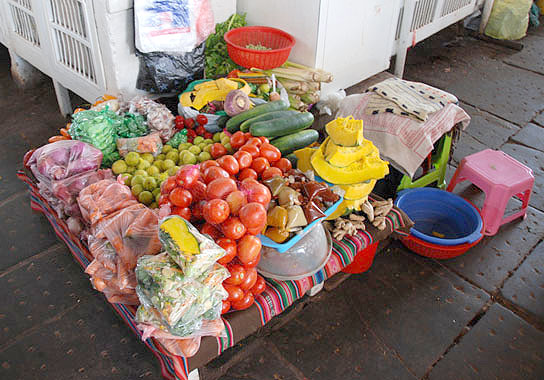
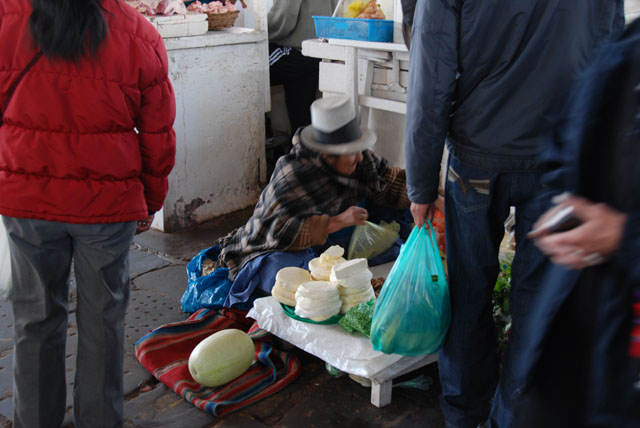
Fresh vegetable and cheeses.
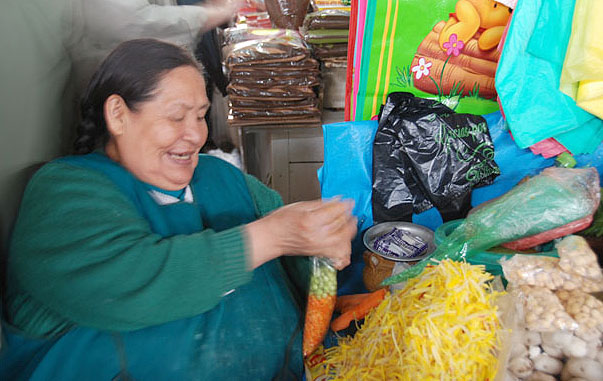
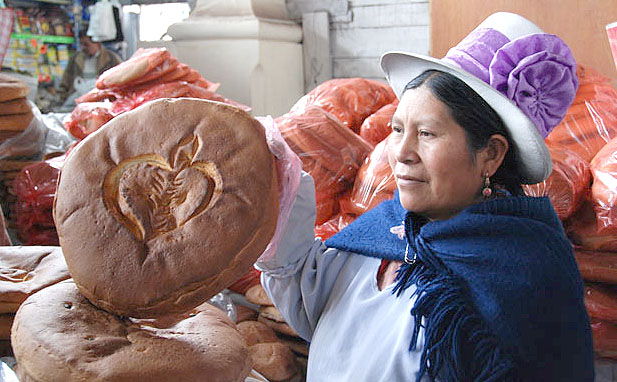
The lady on the left was packaging soup ingredients. The lady on the right had these delicious breads which we all enjoyed.
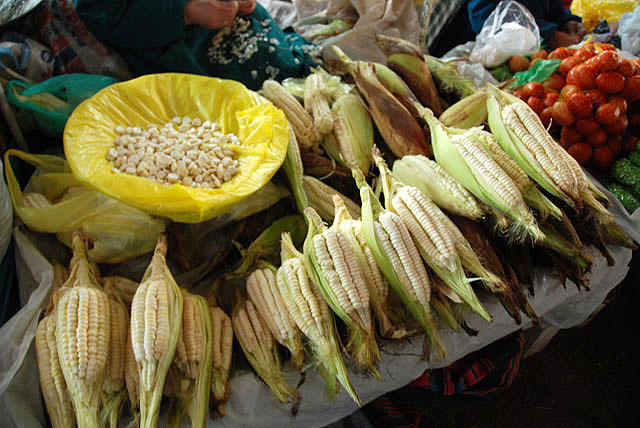
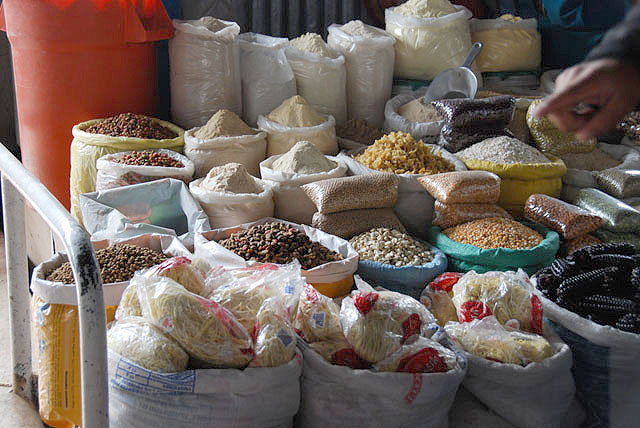
Corn and more grains. All of this is fresh, no preservatives!
Saqsayhuaman
From the market we headed out of town to the fortress of Saqsayhuaman - the site was probably constructed towards the end of the Incan empire. It is fortunate the Spanish did not raze this site to recycle the rock for their own construction projects. The rocks were probably too large for them to handle. The site consists of a plaze and several terraces which may have been used for ceremonial purposes. The most impressive feature of Saqsayhuaman is the size of the rocks and the precision to which the rocks have been cut and polished. The rocks fit so tightly it is impossible to pass a credit card between the stones.
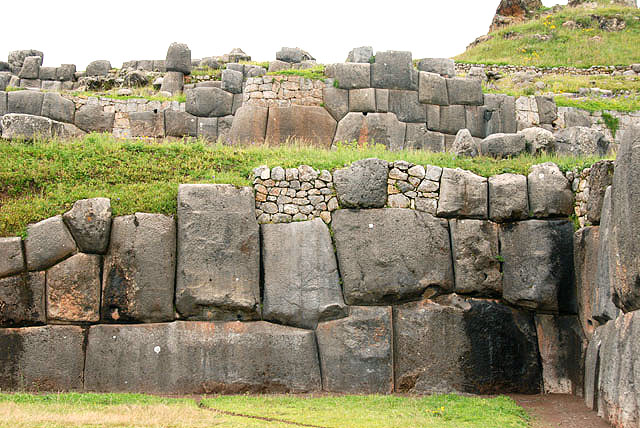
Some of these rocks weigh over 350 tons!
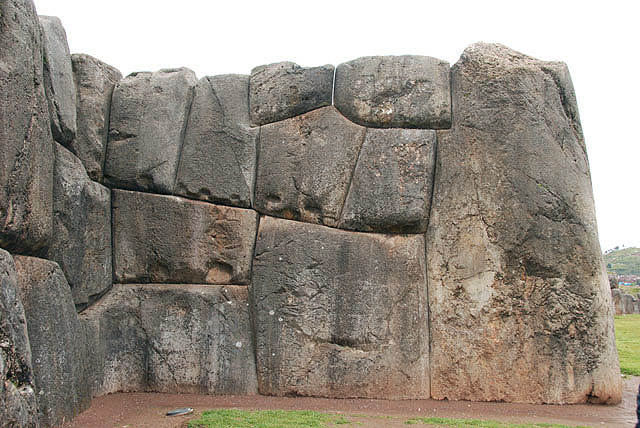
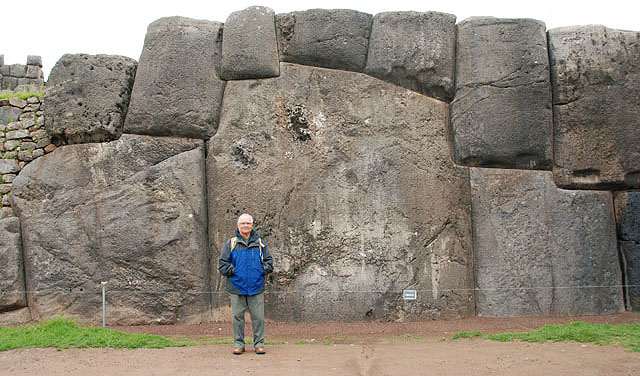
The tallest rock in the fortress is over 20 feet high. The stone behind me is the heaviest stone in the site. It is speculated ramps were used to move the rocks, using hundreds of men to drag them from the quarry site to fortress site.
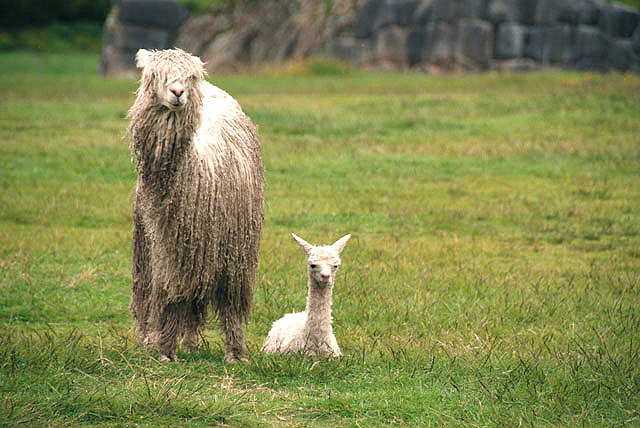
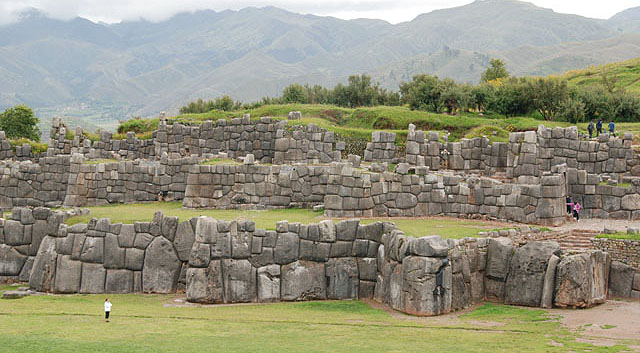
Llamas still graze on the site. The zig-zag foundation is one technique the Inca used to keep the fortress stable in an earthquake.
Cusco was the ancient capital of the Inca. The city's Puma shape lends itself to using the valley and hills for the many monuments and fortifications the Inca constructed. The most uniques aspect of Inca construction is that the majority of rock work is mortar-less. The Inca cut and fitted their building material into random patterns which produced monuments which can withstand earthquakes. Today, many of the wall and ancient sites constructed by the Inca still stand with no indication of damage from the many severe earthquakes the country has endured over the past 500 years.
After touring the site we headed down the hillside to have a Shaman give us a blessing. The ceremony was impressive and similar to the one we had seen when we were in the Amazonas district.
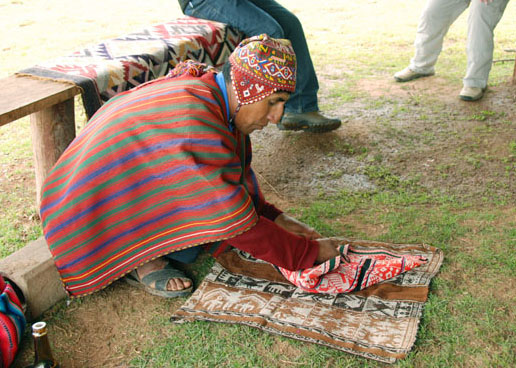

The shaman lays out various food items and charms and then creates a wreath using coca leaves. The entire bundle is then wrapped in a shawl.
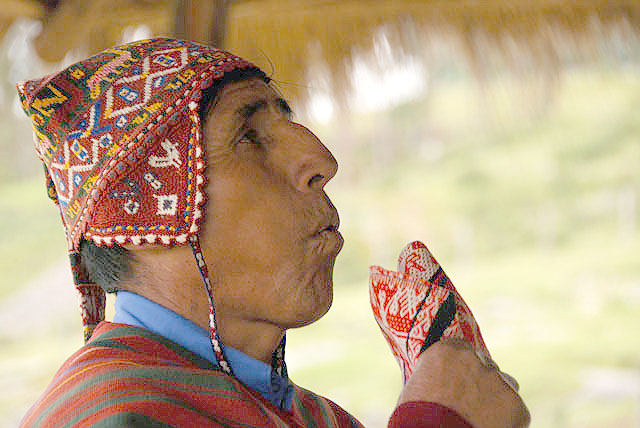
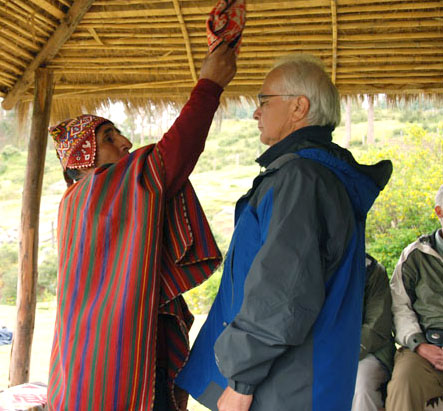
The shaman then makes his incantations, blows his kintu into the bundle and cleanes each participant before buring the bundle.
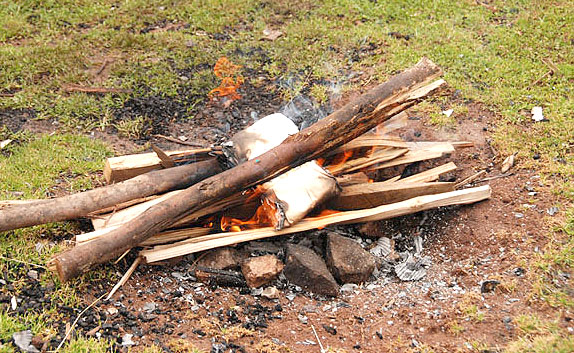
Finally, the bundle is burned, with the thought that one's wishes will be carried in the smoke.
Each of us were allowed to make a wish or wishes and whether they come true it will be up to us.
Almudena Cemetary
Our final stop for the day was Cusco's Almedena Cemetary, located in the Santiago District of Cusco. The cemetary has extensive masoleums and crypts. Some of Peru's notable authors are buried here. What's unusual about the cemetary is that crypt space is rented, not purchased as is the case in the U.S. If one's family cannot pay the rent the remains are removed and the space open to someone else.
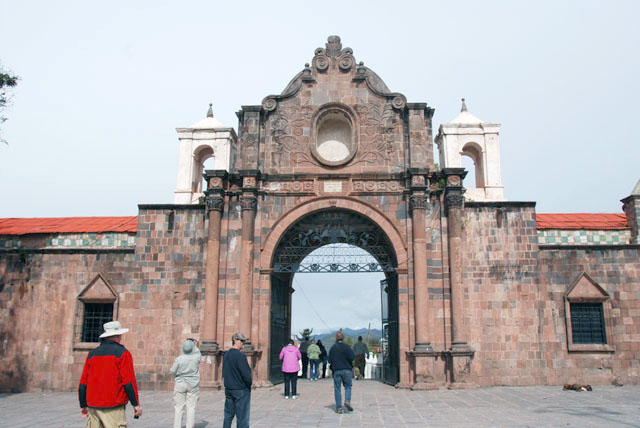
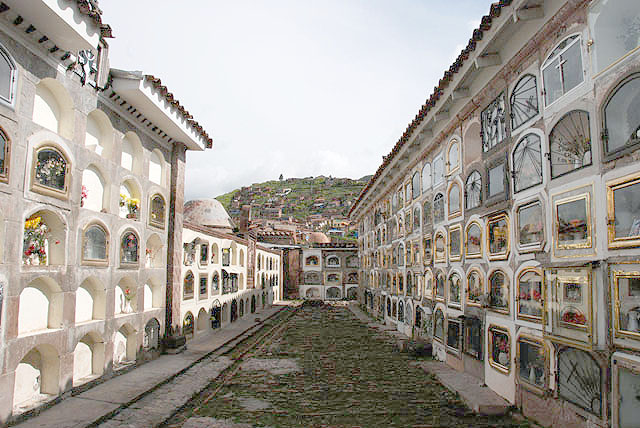
The entrance to the cemetary is striking. Inside crypts of various designes are found in the cemetary.
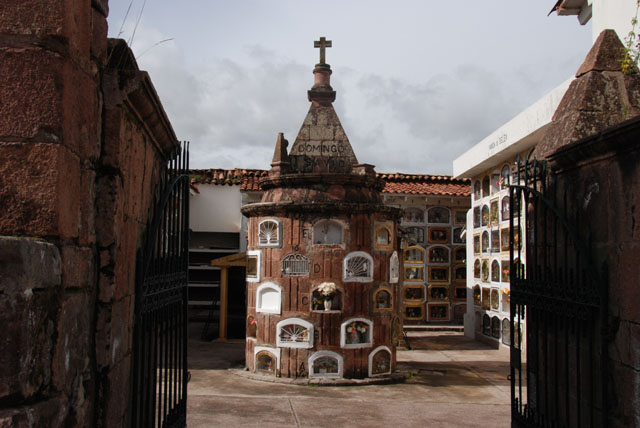
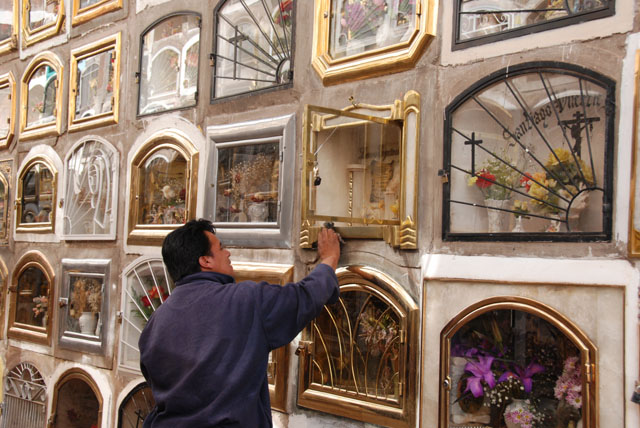
Keeping the family crypt clean is family duty.
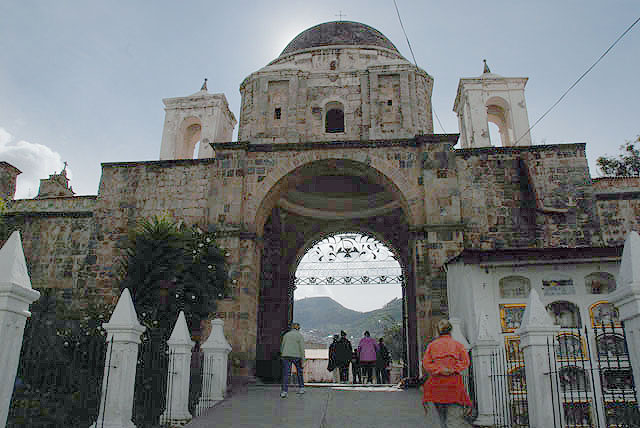
Heading out of the cemetary.
As usual, another day in Cusco and more unusual things to see and experience. The market, the fortress, the shaman ceremony and the cemetary are all part of Cusco culture. You can't go wrong spending several days in this, the ancient capital of the Incan Empire.
Tomorrow would be our last day in Cusco. We would have half of the day to ourselves.
More Galván Trips & Travel Posts
Copyright 2011 Anthony Galván III